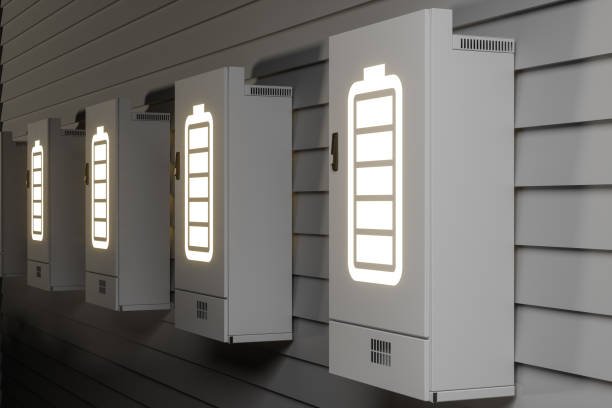Solar Energy Grant for Schools 2024 | Go Green with Renewable Power.

Discover how schools can harness the sun’s energy through Solar Energy Grant for Schools. Learn about funding opportunities for educational institutions to install solar panels, reduce carbon footprints, and teach sustainability. Find out how your school can embrace renewable energy and create a brighter future for students and the environment.
Solar panels offer schools an affordable, low-maintenance solution for powering their facilities with cleaner energy. When paired with solar storage batteries, they can also store surplus energy for future use. As prominent solar energy generators, schools serve as a positive example for students and families, encouraging interest in renewable energy and environmental stewardship.
Moreover, solar panels support educational initiatives by teaching students about environmental sustainability, technological innovation, and the scientific principles behind solar energy. This interdisciplinary approach connects with subjects such as science, geography, and design technology.

Solar Energy Grant for Schools.
Solar Energy Grants for Schools are financial assistance programs aimed at supporting educational institutions in adopting solar power technology. These grants provide funding for schools to install solar panels and related infrastructure, allowing them to generate clean and renewable energy on-site. By harnessing solar energy, schools can reduce their reliance on traditional energy sources, lower utility costs, and demonstrate a commitment to sustainability.
These grants are typically offered by government agencies, nonprofit organizations, or private foundations with a focus on promoting renewable energy adoption and environmental stewardship in the education sector. Eligibility criteria for Solar Energy Grants for Schools may vary depending on the specific grant program but often prioritize schools serving low-income communities, demonstrating a commitment to sustainability education, or showcasing a strong need for energy efficiency upgrades.
Funding provided through Solar Energy Grants can cover various aspects of solar energy projects, including the purchase and installation of solar panels, inverters, mounting systems, and monitoring equipment. Additionally, grants may support educational initiatives such as curriculum development, teacher training, and student engagement activities related to solar energy and environmental conservation.
By leveraging Solar Energy Grants, schools can not only reduce their carbon footprint but also provide valuable learning opportunities for students, empowering them to become future leaders in renewable energy and environmental sustainability. These grants play a crucial role in advancing solar energy adoption in the education sector, fostering a greener and more sustainable future for generations to come.
Available Solar Energy Grant for Schools.
Bright Futures Solar Grant for School
The Bright Green Future Grants Program offers an exciting opportunity for schools to implement sustainability initiatives with financial support of up to $3,000 per project. Designed as a competitive program, schools are encouraged to submit proposals for innovative projects that promote environmental stewardship and sustainability within their communities.
Grant Amount: Up to $3,000 per project.
Application Period: Applications are accepted annually at the beginning of the school year.
Objectives of the grant include:
1. To promote the adoption of solar energy among schools to support environmental sustainability efforts.
2. To provide educational opportunities for students to learn about renewable energy technologies and their benefits.
3. To alleviate the financial burden of solar panel installation for schools through grant funding
Eligibility Criteria:
- Public and private schools (K-12) within [specified region or country].
- Schools must demonstrate a commitment to sustainability and environmental education.
- 3. Schools must have a suitable location for solar panel installation, preferably with unobstructed access to sunlight.
How to Apply:
Interested schools can submit their project proposals during the designated application period. The application process involves outlining the project’s objectives, detailing the proposed activities, budget allocation, and expected outcomes. Schools are encouraged to highlight the educational and community impact of their projects.
Selection Process:
Proposals will be evaluated based on their creativity, feasibility, potential impact, and alignment with sustainability goals. A panel of judges will carefully review each submission to select the most promising projects for funding.
Implementation and Reporting:
Once selected, schools will receive the necessary funding to execute their projects. Throughout the implementation phase, schools are expected to provide progress updates and reports on the project’s achievements. This ensures transparency and accountability while allowing for the sharing of best practices among participating schools.
The Bright Futures Solar Grant aims to empower schools to harness the power of renewable energy by installing solar panels. By doing so, schools can reduce their carbon footprint, educate students about sustainability, and save on energy costs in the long run. This grant program is open to public and private schools across your region or country.
Solar 4R Schools Grant Program (Bonneville Environmental Foundation):
The Solar 4R Schools Grant Program, administered by the Bonneville Environmental Foundation (BEF), is a comprehensive initiative aimed at empowering K-12 schools in the Pacific Northwest to integrate solar energy education and technology into their campuses. Here are the key details of the program:
The primary goal of the Solar 4R Schools Grant Program is to provide schools with the necessary resources, tools, and support to implement solar energy projects and enhance environmental education.
The program targets schools located in the Pacific Northwest region of the United States, including states such as Oregon, Washington, Idaho, and Montana.
Components:
1. Solar Energy Education Kits: Participating schools receive solar energy education kits containing solar panels, inverters, monitoring equipment, and educational materials. These kits enable hands-on learning experiences for students and educators, allowing them to explore the principles of solar energy generation and sustainability.
2. Curriculum Resources: The program offers a variety of curriculum resources and lesson plans designed to integrate solar energy education into existing classroom activities. These resources cover topics such as renewable energy technologies, energy conservation, climate change, and environmental stewardship.
3. Professional Development: BEF provides professional development opportunities for educators to enhance their knowledge and skills in teaching about solar energy and sustainability. Workshops, webinars, and training sessions are available to support educators in effectively incorporating solar energy education into their teaching practices.
4. Technical Assistance: The program offers technical assistance and support to schools throughout the solar energy project implementation process. BEF experts provide guidance on site selection, system design, installation, and maintenance to ensure successful project outcomes.
Application Process: Schools interested in participating in the Solar 4R Schools Grant Program can submit an application through the BEF website. The application typically includes information about the school’s current energy usage, educational objectives, and commitment to sustainability.
Selection Criteria: The selection process considers factors such as the school’s readiness to implement a solar energy project, potential for educational impact, and alignment with program goals. Priority may be given to schools serving underserved communities or demonstrating strong commitment to environmental education.
Outcomes:
By participating in the Solar 4R Schools Grant Program, schools can expect to achieve several outcomes, including:
- Increased awareness and understanding of solar energy and sustainability among students and educators.
- Enhanced STEM education through hands-on learning experiences with solar technology.
- Reduced environmental impact and carbon emissions through the adoption of renewable energy solutions.
- Strengthened community engagement and partnerships in support of sustainability initiatives.
The Solar 4R Schools Grant Program provides a valuable opportunity for schools to embrace solar energy technology, promote environmental literacy, and inspire the next generation of environmental leaders.
California Solar Initiative (CSI) Schools Program:
The CSI Schools Program offers incentives and technical assistance to California K-12 schools interested in installing solar photovoltaic (PV) systems. Schools can receive funding based on the size of the solar installation, with additional incentives for incorporating solar education into the curriculum.
Michigan Renewable Schools Program (Groundwork Center for Resilient Communities):
This program provides grants and technical assistance to Michigan schools seeking to install solar energy systems. Participating schools receive funding support, curriculum resources, and access to educational workshops.
New York State Energy Research and Development Authority (NYSERDA) K-12 Solar Schools Program:
NYSERDA offers grants and technical assistance to New York K-12 schools for solar energy projects. Schools can receive funding for solar installations, energy efficiency upgrades, and sustainability education initiatives.
Green Schools Program (Minnesota Department of Commerce):
This program offers grants to Minnesota K-12 schools for energy efficiency and renewable energy projects, including solar installations. Schools can apply for funding to cover the cost of solar PV systems and related educational activities.
These grant opportunities provide funding and support specifically tailored for schools interested in implementing solar panel energy projects.

READ ALSO: Technical School Grants and Scholarships Guide 2024.
Benefits of Solar Energy in Schools
The benefits of solar energy in schools includes:
1. Cost Savings:
Solar energy helps schools reduce their electricity bills significantly. By generating their own electricity, schools can lower their reliance on traditional utility providers, resulting in long-term cost savings. This allows schools to allocate more funds towards educational programs, facilities, and resources.
2. Environmental Impact:
Solar energy is a clean and renewable energy source that produces minimal greenhouse gas emissions compared to fossil fuels. By switching to solar power, schools can reduce their carbon footprint and contribute to mitigating climate change. This demonstrates a commitment to environmental stewardship and sets a positive example for students and the community.
3. Educational Opportunities:
Solar energy systems provide valuable educational opportunities for students across various subjects, including science, technology, engineering, and mathematics (STEM). Students can learn about renewable energy technologies, solar panel design and installation, energy conservation, and environmental sustainability through hands-on experiences with solar projects on campus.
4. Curriculum Integration:
Solar energy projects can be integrated into school curricula to enhance learning outcomes and engage students in real-world applications of STEM concepts. Teachers can develop interdisciplinary lessons and activities related to solar energy, energy efficiency, climate change, and sustainable development, fostering critical thinking, problem-solving, and environmental literacy among students.
5. Community Engagement:
Solar energy initiatives provide opportunities for schools to engage with the local community and foster partnerships with businesses, government agencies, nonprofit organizations, and energy utility companies. Community involvement in solar projects can enhance public awareness, support fundraising efforts, and promote collaboration on sustainability initiatives beyond the school campus.
6. Resilience and Energy Independence:
Solar energy systems enhance the resilience of school facilities by providing a reliable source of electricity during power outages or emergencies. With on-site solar power generation, schools can maintain essential operations, such as lighting, heating, and communications, even when the grid is down. This improves energy independence and ensures continuity of educational services for students and staff.
7. Long-Term Investment:
Solar energy installations represent a long-term investment for schools, with relatively low operating and maintenance costs compared to conventional energy systems. Solar panels have a lifespan of 25 years or more and require minimal maintenance, making them a cost-effective solution for meeting the energy needs of schools over the long term.
8. Demonstration of Leadership:
By adopting solar energy, schools demonstrate leadership in sustainable practices and environmental responsibility. Solar projects showcase a commitment to reducing reliance on fossil fuels, promoting renewable energy adoption, and addressing climate change. This can enhance the school’s reputation, attract environmentally conscious students and faculty, and inspire other educational institutions to follow suit.
These benefits highlight the multifaceted advantages of solar energy for schools, encompassing financial savings, educational opportunities, environmental stewardship, community engagement, resilience, and long-term sustainability.
Eligibility Criteria for Solar Energy Grants for Schools.
The eligibility criteria for solar energy grants for schools can vary depending on the specific grant program and the organization providing the funding. However, here are some common eligibility criteria that schools may encounter when applying for solar energy grants:
1. Educational Institution Status:
Typically, schools must be recognized as educational institutions by relevant authorities to be eligible for solar energy grants. This includes public and private K-12 schools, colleges, universities, vocational schools, and educational facilities serving students of all ages.
2. Location of school:
Some grant programs may prioritize schools located in specific geographic areas, such as regions with high solar potential, underserved communities, or areas with a demonstrated need for renewable energy adoption. Schools located in urban, suburban, or rural areas may all be eligible, depending on the grant program’s focus.
3. Financial Need:
Many solar energy grant programs target schools with limited financial resources or those serving low-income communities. Schools may be required to demonstrate financial need through documentation such as free or reduced-price meal program participation rates, Title I eligibility, or other indicators of socioeconomic disadvantage.
4. Ownership or Authorization:
Schools must have ownership or authorization to install solar energy systems on their property. This may include obtaining approval from school boards, district administrators, or other relevant governing bodies. In the case of leased or rented facilities, schools may need permission from landlords or property owners.
5. Compliance with Regulations:
Schools must comply with all applicable regulations, codes, and zoning requirements related to solar energy installations. This may include obtaining permits, conducting site assessments, and ensuring that solar projects meet local building codes, fire safety standards, and environmental regulations.
6. Commitment to Sustainability:
Some grant programs may require schools to demonstrate a commitment to sustainability and environmental stewardship through existing initiatives, policies, or curriculum integration efforts. Schools with sustainability plans, green teams, or environmental education programs may receive preference in the selection process.
7. Educational Impact:
Grant programs may prioritize schools that demonstrate the potential for educational impact through solar energy projects. This includes integrating solar energy into curricula, engaging students in hands-on learning experiences, and promoting STEM education, environmental literacy, and community involvement.
8. Project Feasibility:
Schools must present a feasible plan for implementing solar energy projects, including site suitability assessments, energy audits, project timelines, budget estimates, and technical specifications. Grant applications should demonstrate the school’s readiness and capacity to successfully execute the proposed solar energy project.
9. Collaboration and Partnerships:
Schools may be encouraged to collaborate with community partners, energy stakeholders, local businesses, or nonprofit organizations to leverage resources, expertise, and support for solar energy initiatives. Partnerships that enhance project feasibility, educational opportunities, and community engagement may strengthen a school’s grant application.
10. Documentation and Reporting:
Schools must provide accurate and complete documentation to support their grant applications, including financial statements, project proposals, letters of support, and other relevant information. Grant recipients may also be required to report on project progress, outcomes, and impact metrics as part of grant compliance and accountability measures.
It’s essential for schools to carefully review the eligibility criteria and requirements outlined in each grant program’s guidelines to determine their suitability and ensure they meet all necessary criteria before applying.

Conclusion on Solar Energy Grant for Schools.
Solar Energy Grants for Schools offer a transformative opportunity for educational institutions to embrace sustainability, reduce energy costs, and empower students with hands-on learning experiences. By harnessing the power of the sun, schools can not only generate clean and renewable energy but also inspire a new generation of environmental stewards.
Through these grants, schools can access funding to install solar panels, implement energy efficiency measures, and develop educational programs centered around renewable energy and environmental sustainability. By integrating solar energy into their facilities and curriculum, schools can demonstrate leadership in addressing climate change and promoting a greener future.
Moreover, Solar Energy Grants enable schools to make a tangible impact on their communities by reducing carbon emissions, lowering utility bills, and providing valuable learning opportunities for students. By investing in solar energy, schools can create a legacy of environmental responsibility and innovation that will benefit students, staff, and the broader community for years to come.
In essence, Solar Energy Grants for Schools represent more than just a financial investment; they signify a commitment to sustainability, education, and the well-being of future generations. By seizing the opportunity to embrace solar energy, schools can play a vital role in shaping a brighter, cleaner, and more sustainable future for all.
Frequently Asked Questions on Solar Energy Grant for Schools
1. What is a Solar Energy Grant for Schools?
A Solar Energy Grant for Schools is a financial assistance program offered by government agencies, nonprofits, or private organizations to help educational institutions install solar energy systems on their campuses. These grants aim to promote renewable energy adoption, reduce carbon emissions, and provide educational opportunities for students.
2. Who is eligible for Solar Energy Grants for Schools?
Eligibility criteria vary depending on the grant program, but typically, public and private K-12 schools, colleges, universities, and other educational institutions are eligible to apply. Some grants may prioritize schools serving low-income communities or demonstrating a commitment to sustainability education.
3. What expenses do Solar Energy Grants for Schools cover?
Solar Energy Grants may cover various expenses associated with installing solar energy systems, including the purchase and installation of solar panels, inverters, mounting hardware, and monitoring equipment. Some grants may also cover costs related to project design, engineering, and permitting.
4. How much funding can schools receive through Solar Energy Grants?
The amount of funding available through Solar Energy Grants for Schools varies depending on the grant program, the size of the solar project, and the applicant’s specific needs. Grants may range from a few thousand dollars for small-scale installations to hundreds of thousands of dollars for larger projects.
5. Are Solar Energy Grants for Schools competitive?
Yes, Solar Energy Grants for Schools are often competitive, as there may be a limited amount of funding available and a high demand from schools seeking to implement solar projects. Schools are typically evaluated based on factors such as project feasibility, educational impact, community benefits, and financial need.
6. How can schools apply for Solar Energy Grants?
– Schools can typically apply for Solar Energy Grants by completing an application form provided by the grant provider and submitting required documentation, such as project proposals, budget estimates, and letters of support. The application process may also involve demonstrating the school’s eligibility and outlining the intended use of grant funds.
7. What are the benefits of installing solar energy systems in schools?
Installing solar energy systems in schools offers numerous benefits, including reduced energy costs, decreased reliance on fossil fuels, lower carbon emissions, and educational opportunities for students to learn about renewable energy and environmental sustainability.
8. Are there any ongoing maintenance costs associated with solar energy systems?
While solar energy systems generally require minimal maintenance, there may be some ongoing costs for routine inspections, cleaning, and occasional repairs. However, these costs are typically much lower than the savings achieved through reduced energy bills.
9. Can schools sell excess solar energy back to the grid?
Depending on local regulations and utility policies, schools may have the option to sell excess solar energy back to the grid through net metering or feed-in tariff programs. This can provide additional revenue streams and help offset the initial investment in solar energy systems.
10. Where can schools find more information about Solar Energy Grants?
Schools can find more information about Solar Energy Grants by contacting local government agencies, nonprofit organizations, and energy utility companies. Additionally, online resources, grant databases, and workshops or webinars may provide valuable guidance on available grant opportunities and the application process.
These FAQs and answers can serve as a helpful resource for schools interested in learning more about Solar Energy Grants and how they can benefit from implementing solar energy systems on their campuses.


